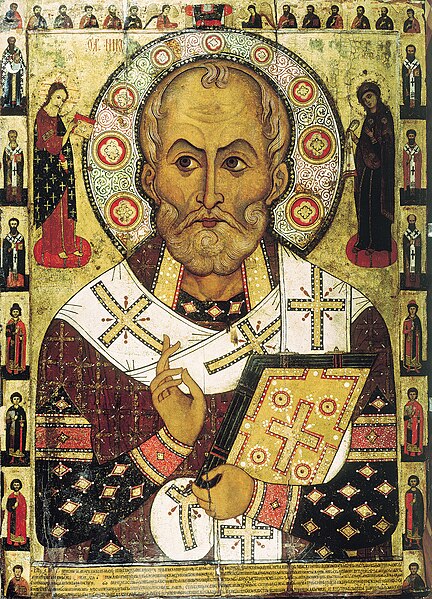Image may be NSFW.
Clik here to view.
Many people already know that the origins of Santa Claus date back to Saint Nicholas, the Bishop of Myra (in present day Turkey); and that Clement C. Moore’s famous poem “A Visit from Saint Nicholas” has contributed significantly to the modern view of Santa as a jolly, rotund man with a white beard and red suit. However, the traditions surrounding Santa Claus extend much further than most people realize, echoing folklore that stems from Germanic, Dutch, Scandanavian, and British stories.
St. Nicholas was a holy man known for his generosity in giving gifts to poor and his love of children. After his death in 340 AD, he became an extremely popular saint throughout Europe, and is claimed in various countries as the patron saint of sailors, children, and travelers. Thousands of churches across Europe were dedicated to him and an official church holiday was created in his honor. In medieval times nuns used the night of December 6, the Feast of St. Nicholas, to deposit baskets of food and clothes anonymously at the doorsteps of the needy. Also on December 6, sailors would descend to the harbor towns to participate in a church celebration for their patron saint. On the way back they would stop at one of the various Nicholas fairs to buy gifts for their loved ones and children. While the real gifts would only be presented at Christmas, the little presents for the children were given right away, courtesy of Saint Nicholas.
After the Reformation, European followers of St. Nicholas dwindled, but the legend was kept alive in Holland where the Dutch spelling of his name Sint Nikolaas was eventually transformed to Sinterklaas. Dutch children would leave their wooden shoes by the fireplace, and Sinterklaas would reward good children by placing treats in their shoes. Dutch colonists brought this tradition with them to America in the 17th century, where the name Sinterklaas was Anglicized into Santa Claus.
However, this is not the end of Santa Claus’s story! In our next article, we will explore the influence of Germanic and Scandanavian folklore on the tradition of Santa Claus!
